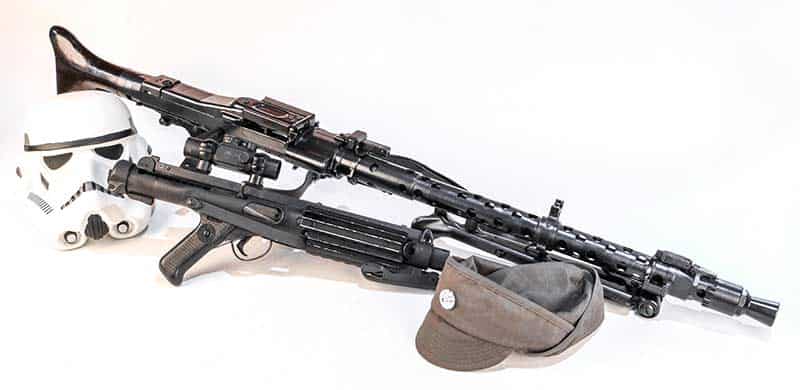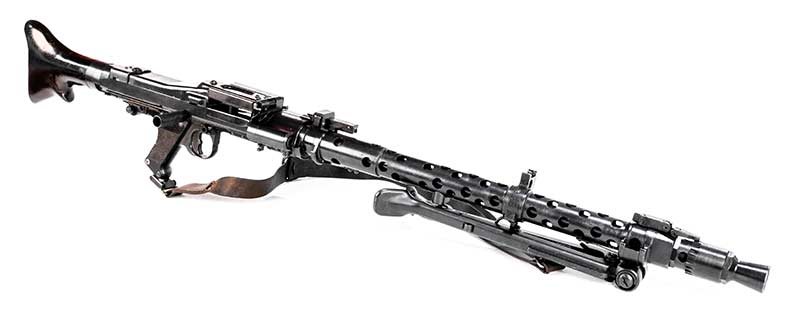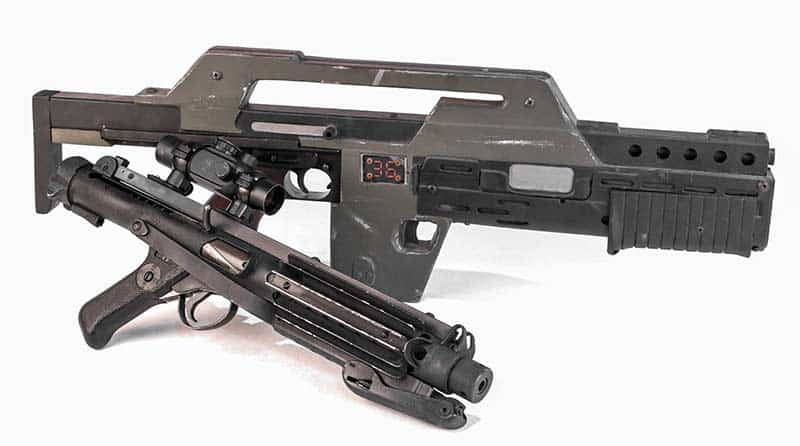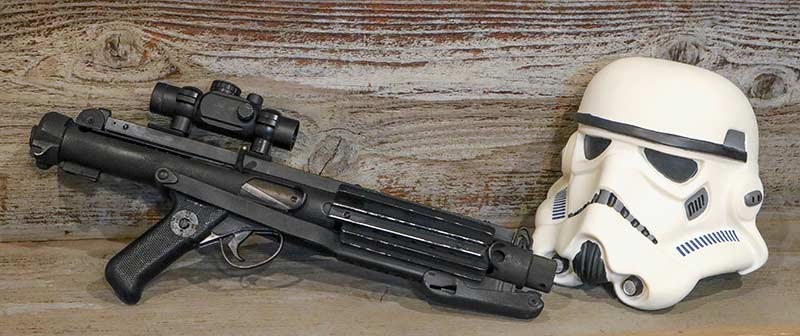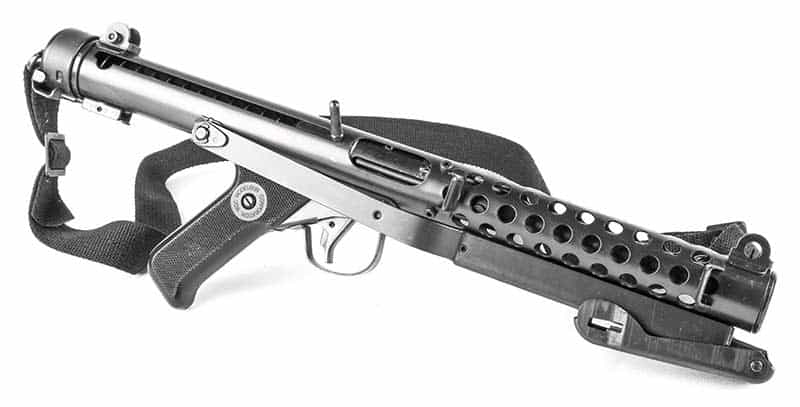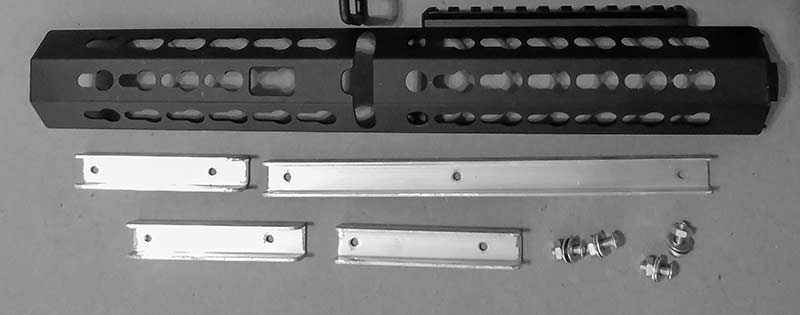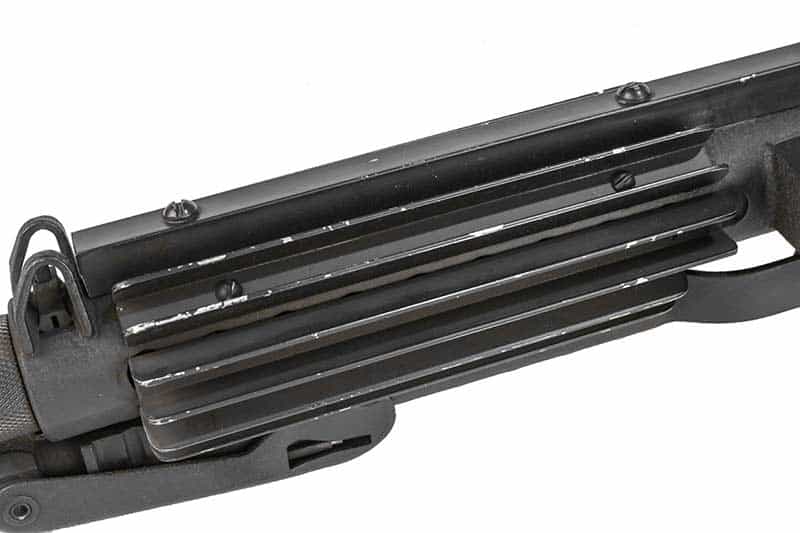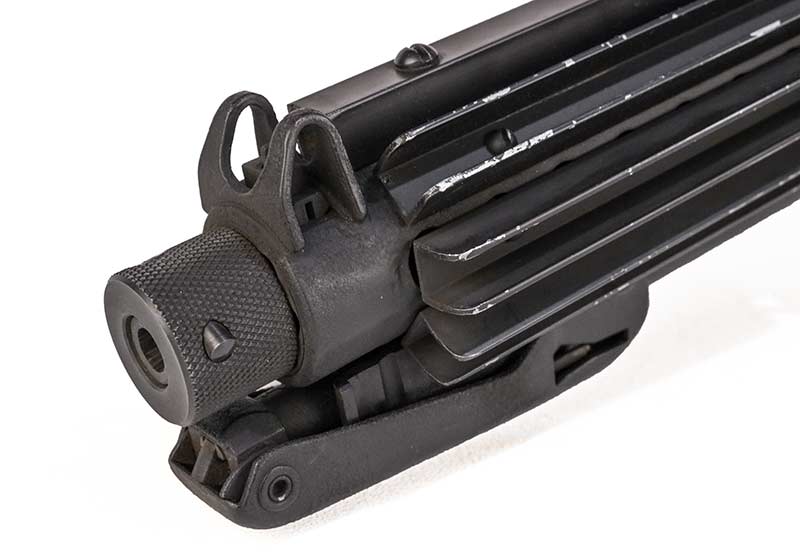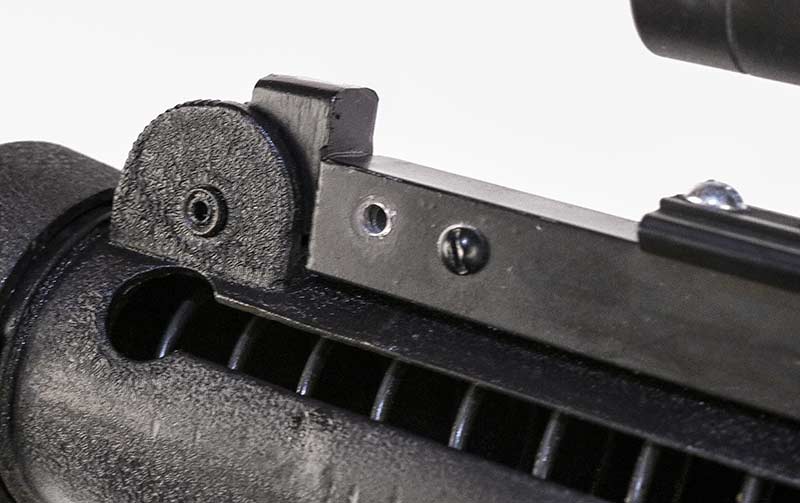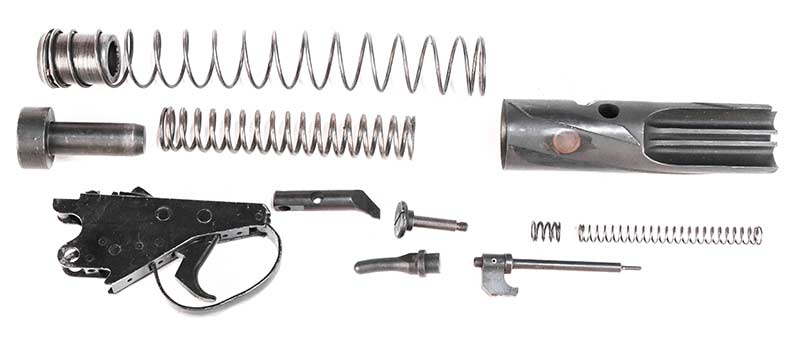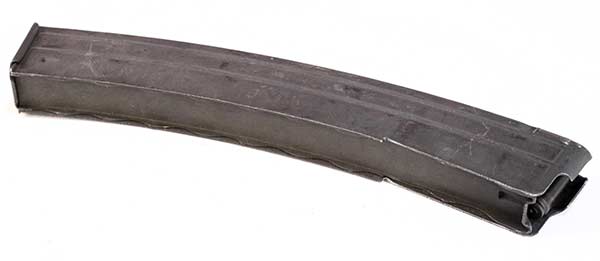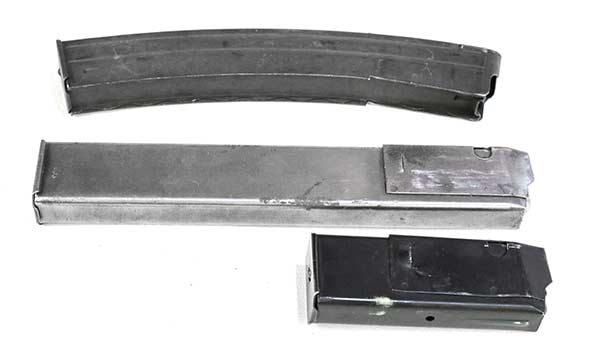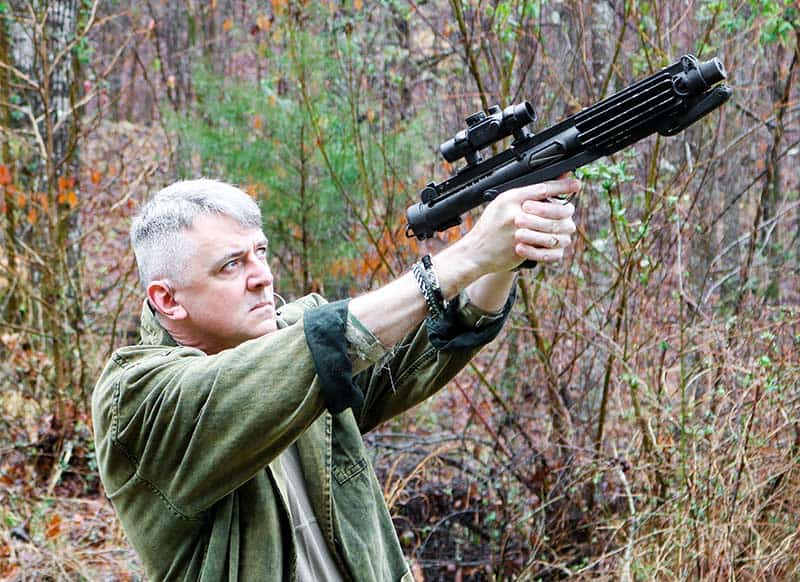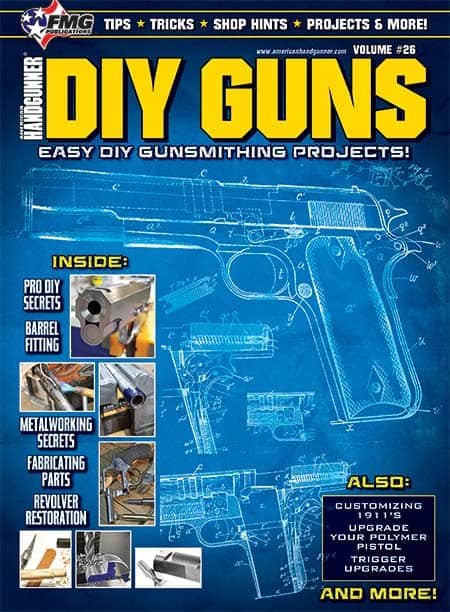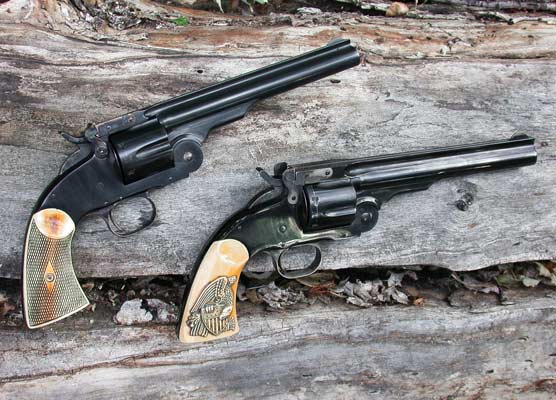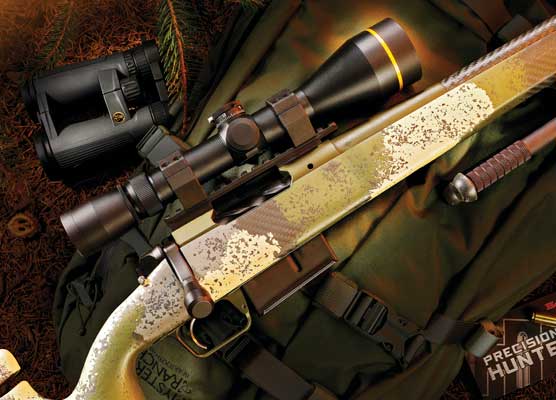The Ultimate Movie Gun
DIY BlasTech E-11 Stormtrooper Blaster
A disclaimer is in order: Star Wars is a pretty serious thing for me. In 1977 I was 11 years old. I recall even today the playground chatter about some incredibly cool new space movie. The bad guy was some big black dude in a space suit. My mental image was Kareem Abdul-Jabbar wearing Neil Armstrong’s clear plexiglass NASA helmet. Then I actually saw the film.
I sat in the front row in a tiny theater in Brookhaven, Miss., gleefully ensconced between a brace of cousins. Were I to do the same today I’d likely suffer the sort of neck cramp that might actually kill me. Back then, however, I was much more flexible.
At the conclusion of the final credits, I sat amidst a massive pool of unseemly drool. My heart raced, and my breath came in shallow gasps. I involuntarily rose to my feet amidst a sea of similarly mesmerized grade schoolers, held a skinny fist aloft and shouted, “As God as my witness, someday I will bodge together an Imperial blaster of my own!”
In truth, I didn’t actually say that. However, the seeds planted that fateful day did indeed spark a lifelong quest. Several decades of toil later, I am proud to admit my gun collection does actually include a genuine Blas-Tech E-11 stormtrooper blaster. Here is how it came to be.
Backstory
Firearms are an integral part of the modern cinema experience. To paraphrase the Terminator, “It is in our nature to destroy ourselves.” In no place is the axiom better manifest than in the ubiquitous weapons used to entertain us.
Star Wars was actually a fairly iffy thing. United Artists, Universal and Disney all rejected the project as excessively weird. I bet they feel pretty freaking stupid right about now. 20th Century Fox eventually agreed to produce the movie. The film was an unprecedented gamble for the studio and went over its $8 million budget by $2 million before it debuted. Star Wars is now recognized as the second-highest grossing film in North America (behind Gone with the Wind) and the fourth-highest grossing movie of all time. In 1977 there were 60 American theaters that ran nothing but Star Wars on every screen for a full year.
Per the original screenplay, Luke Skywalker was to be Luke Starkiller. Kurt Russell, Sylvester Stallone, Christopher Walken, Al Pacino, Bill Murray and Steve Martin were all considered for the role of Han Solo before Harrison Ford made the final cut. Jodie Foster turned down Princess Leia’s flowing white robes due to previous commitments. Alec Guinness was the only member of the cast who thought the film would be a success.
The studio work for the movie was undertaken in London, so the weapons used were drawn from the guns available in Europe in the 1970s. According to the backstory, BlasTech was the primary manufacturer of Imperial small arms. The BlasTech DLT-19 wielded by stormtroopers on Tatooine and by Chewbacca on the Death Star was a minimally modified German MG34 machine gun. The scant rails included on the barrel shroud were actually just metal drawer runners purchased from a hardware store down the street from Bapty and Co., the company that supplied the weapons for the film.
The ballistic star of the movie, however, was the BlasTech E-11 stormtrooper blaster. Crafted from British Army-issue L2A3 Sterling submachine guns, the E-11 became a sci-fi icon. This weapon became my grail.
Technical Particulars
The E-11 blasters used in Star Wars and The Empire Strikes Back crafted from fully operational Sterling SMGs. These weapons were modified to cycle with blanks and can be seen ejecting empty cases during certain action sequences. Luke and Leia struggling to cross the chasm in the Death Star is a good place to start if you’re geeky enough to want to see it for yourself. The muzzle flash and report gave the special effects folks a starting point and served as cues for the actors.
By the time Return of the Jedi came along, the state of the movie-making art had advanced to the point where the blasters no longer needed to produce a muzzle flash. As a result, the props used for this film were crafted from Japanese-made non-firing Model Gun Corporation Sterlings. The technical details were similar, though not identical for all the blasters used in these three films.
The basic L2A3 Sterling chassis was left unmolested. Bapty armourers added cooling fins along the ventilated barrel shroud and affixed a periscope of the sort used in Lend-Lease M4 Sherman tanks atop the receiver. Some blasters included a small non-functional battery pack, while others did not. All the blasters were fitted with stubby magazines.
Raw Material
I started my build with a semi-auto Wiselite Sterling. These guns were sold by Century Arms for a time, though they have not been in the Century catalog for years. As I have my own 07/02 manufacturer’s FFL, I registered the gun as a post-sample machine gun and converted it to full auto using an original British surplus Sterling parts kit. For those of you who might be tempted to stop reading at this point, fret not. Should you wish to build a blaster of your own, the raw material is still available to do so legally and relatively easily.
Surplus Sterling SMG parts kits, raw barrels, semi-auto conversion parts and unfinished receiver tubes with bonded-on templates are all available online. The easiest way to build a host gun today is to finish out the weapon as a semi-auto pistol. Weld the stock in the closed position before completing the receiver and you avoid any unfortunate Imperial entanglements.
It takes a little mechanical talent to pull this off, but I have honestly completed tougher builds in my home workshop. Get some professional help if the welding seems overly daunting. It’s simply breathtaking what you can accomplish with a Dremel tool deftly wielded.
The Transformation
The actual conversion from L2A3 Sterling SMG into BlasTech E-11 stormtrooper blaster is fairly straightforward. Your local Home Depot sells aluminum U-channel stock. I measured the sections to length and cut them down using a cutoff wheel on a table saw. I dressed the edges by hand and rounded the ends using a bench grinder and sanding wheel. I then sighted my screw holes to align with the cooling holes in the Sterling’s barrel shroud.
To set the fins in place I used machine screws and butterfly nuts reversed such that the nuts rode inside the barrel shroud. I had to cut the wings of the butterfly nuts back just a bit to get them to fit through the cooling holes, and I ground little notches to help them fit snugly. Attaching the cooling fins is conceptually similar to mounting accessories on an M-LOK rail. Get the cooling fin assembly in place and then tighten the machine screws into the modified butterfly nuts until everything is snug. A little thread locker keeps things in place.
I didn’t have a Sherman tank periscope handy, and I wanted this rig to actually work. I therefore substituted an inexpensive NC Star red dot sight. To improvise a mount, I used the same aluminum U-channel stock, but this time mounted it with the open side down. I didn’t want to permanently modify the host gun, so I bodged together an adaptor to secure the back end of this assembly to the rear sight.
The front end is held in place with a butterfly nut in the manner of the cooling fins. With the base in place, I secured some aluminum scope rail harvested from my parts box. Degrease everything, spray it with flat black engine block paint from your local Auto Zone and cook the gun per the instructions on the can. The resulting finish will outlive you.
The 34-round box magazine used with the Sterling submachine gun is an object of undeniable engineering beauty, and I could not bring myself to cut one up for this project. This device sports an elegant curve and a unique roller bearing follower. Fun fact: Sten magazines will actually fit and feed in the Sterling. Sten mags were cheap as tent pegs when I built this gun, so I gladly sacrificed an old beater example to the cause.
I disassembled the Sten magazine and carefully cut it to length using the cutoff wheel on the table saw. I then dressed the cut end with my Dremel tool and carefully recreated the mounting lips using a wide pair of pliers. I cut one coil at a time off the lift spring until the pressure felt about right and reassembled the magazine using the original floorplate. Mine only holds five rounds, but it runs like a scalded ape.
It Is Alive!
Friends, you simply have not lived until you stroll out onto a public firing range packing an operational Star Wars blaster. This thing will reliably get you a seat at the cool kids’ table anyplace two or more gun nerds are gathered. Expect a crowd as soon as you slide it out of its case.
The stubby little magazine doesn’t last very long on full auto, but the gun still runs the big sort if you can stomach the aesthetic dissonance. My version fires from the open bolt via advanced primer ignition. A semiauto build will fire from the closed bolt. I don’t think I’ve ever had a stoppage with my blaster.
How accurate is this thing, might you ask? Who cares? It’s a freaking Star Wars blaster. Even if it couldn’t hit the broadside of a bantha at half a parsec (not a real measure of a weapon’s innate accuracy potential) it wouldn’t matter. Every time I have ever run this gun in a crowd everybody stares at the blaster, not the target.
In reality, the gun remains just as effective as the host Sterling. The rate of fire is sedate, and the ergonomics are first rate. Shallow grooves cut into the surface of the bolt channel grime away for reliable function. It would take the strength of a Wookiee to run the gun pistol-fashion like they do in the film, but my E-11 blaster would fill a room with pain should it ever be called upon to do so.
Ruminations
It took literally decades of scrounging, some rarefied government licenses and a not insubstantial investment to contrive my BlasTech E-11 stormtrooper blaster. However, it no longer matters how geeky I was in high school or how tough it might have been to get dates.
Clarification: “Getting dates wasn’t tough at all.” The Author.
Further clarification: “Oh yes, it was. Have you seen a picture of this guy?” The Author’s Wife.
Now I’m very nearly cool. Packing an operational BlasTech E-11 Imperial-issue stormtrooper blaster will do that for a guy.
